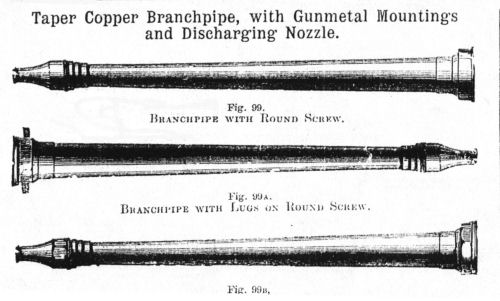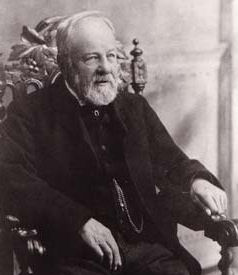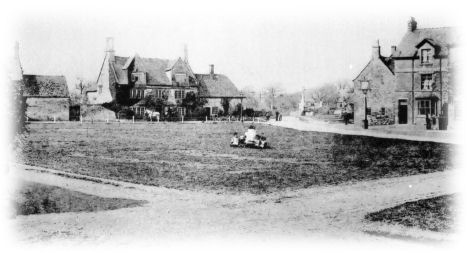|
Formation
of the Parish Brigade
|
|||||||||||||||||||||
|
The provision of equipment to protect life and property from the effects of fire is taken for granted in this country. Through various Acts of Parliament everyone can now expect to receive the services of a fire brigade, when required, free of charge. This was not the case in the closing years of the 19th century. In Broadway at this time there were more than three hundred properties, some quite large, and a population of around 1500 people to protect. Despite this there were virtually no fire fighting facilities in the village. In the 1870's, some members of the community in Broadway had recognised, and discussed, the need for a fire engine. Their concern was probably prompted by a large fire in nearby Childswickham in October 1873 when three families lost their homes, as cottages and barns were destroyed by fire, and by other lesser fires which occurred in and around Broadway at that time. Also, an appalling house fire in neighbouring Willersey in 1843, when seven lives were lost, was still then well within living memory (for details see chapter on Fires 1739 -1939). Incidents like these were sometimes attended by the district fire engine from Evesham. Although getting them to the incident could be a somewhat lengthy process. In order to get the engine turned out it was necessary for a rider to be despatched to Evesham to raise the alarm. Thus a couple of hours could elapse before the Evesham Brigade arrived on the scene. The electric telegraph reached the village in 1851, so may also have been used to call the Evesham Brigade, although this service would only have been available during the hours the Post Office was open. |
|||||||||||||||||||||
|
Consideration
was still being given to fire protection when, at a meeting of Broadway
Parish Council on 29th July 1895, it was unanimously agreed to accept
the services of a "Volunteer Fire Brigade". In January the
following year the clerk to the Parish Council, Giles Stephens, wrote
to Evesham Rural District Council asking if the nine
volunteers could use the Broadway fire hose for practice. Permission
was given by the R.D.C. on the understanding that the firemen only used
one length of hose at a time, and that it was thoroughly dried and cleaned
before being put away. Hose was made either of leather or canvas so
it was essential it was clean and dry before being stored to prevent
rotting. The District Council also requested that great care be taken
of the other equipment.
|
|||||||||||||||||||||
|
Those
who now believed there was adequate fire cover in Broadway must have
been shaken from their apathy by the events of 3rd September 1897. A
fire, made all the more dramatic because it occurred at night, destroyed
the Lower Mill and the adjoining house in Cheltenham Road; a property
owned and occupied by parish councillor Benjamin Burrows. Thanks largely
to the efforts of the many villagers who turned out to help, most of
the contents of the house were saved. But, it was said at the time,
that if a fire pump had been available within one hour of the outbreak,
the house itself could have been saved. Although the water main did
not extend as far as the Mill there was an almost limitless supply of
water available in the adjacent mill pond. Unfortunately, over three
hours elapsed before the arrival of the Evesham fire engine. (for details
see chapter on Fires 1759 -1939)
Prompted
by this fire, and the resulting local concern, Broadway Parish Council
moved quickly towards setting up a fully equipped fire brigade. They
contacted Evesham Rural District Council for advice, asking whether
they were permitted by law to provide a fire engine. The District Council
confirmed that under Section 6, sub section 1c(ii) of the Local Government
Act 1894 the Parish Council was empowered to supply a fire engine, and
under various other Acts were able to borrow money for its purchase,
and also provide an engine house.
The
Lighting & Watching Committee of the Parish Council under the chairmanship
of Robert Cordell was given the job of finding a suitable engine and
to consider methods of funding. There were many meetings to discuss
progress, including a well attended public meeting in the Old Schools.
Another meeting was attended by a representative from Merryweather &
Son of London, the fire engine manufacturers. At this time the fire
engine manufacturers were amongst the best sources of information and
help with regard to setting up a fire brigade, there being no government
body to turn to. Catalogues and specifications of various engines were
obtained from Merryweather's. These were scrutinised, and from a short
list of three the committee eventually decided to recommend that a Greenwich
Manual fire engine be purchased at a cost of £116:10s.
|
|||||||||||||||||||||
|
|||||||||||||||||||||
|
In
addition to the engine, helmets, belts, tunics and boots were required.
Merryweather & Son's estimate for these items was about £100.
This sum and £4:10s for the harness was met from parish funds.
The engine was ordered from Merryweather & Son, and duly despatched
by them on 16th November 1897. It travelled by rail from their works
in Greenwich Road London to Honeybourne, as the railway to Broadway
was not yet built. Two weeks later it was put on display outside The
Lygon Arms Hotel, where it was probably stored prior to the building
of the engine house. It was the day of the grand opening of the new
reservoir which brought many visitors to the village. The brand new
engine attracted much interest, and it must have made a splendid site.
|
|||||||||||||||||||||
|
|||||||||||||||||||||


